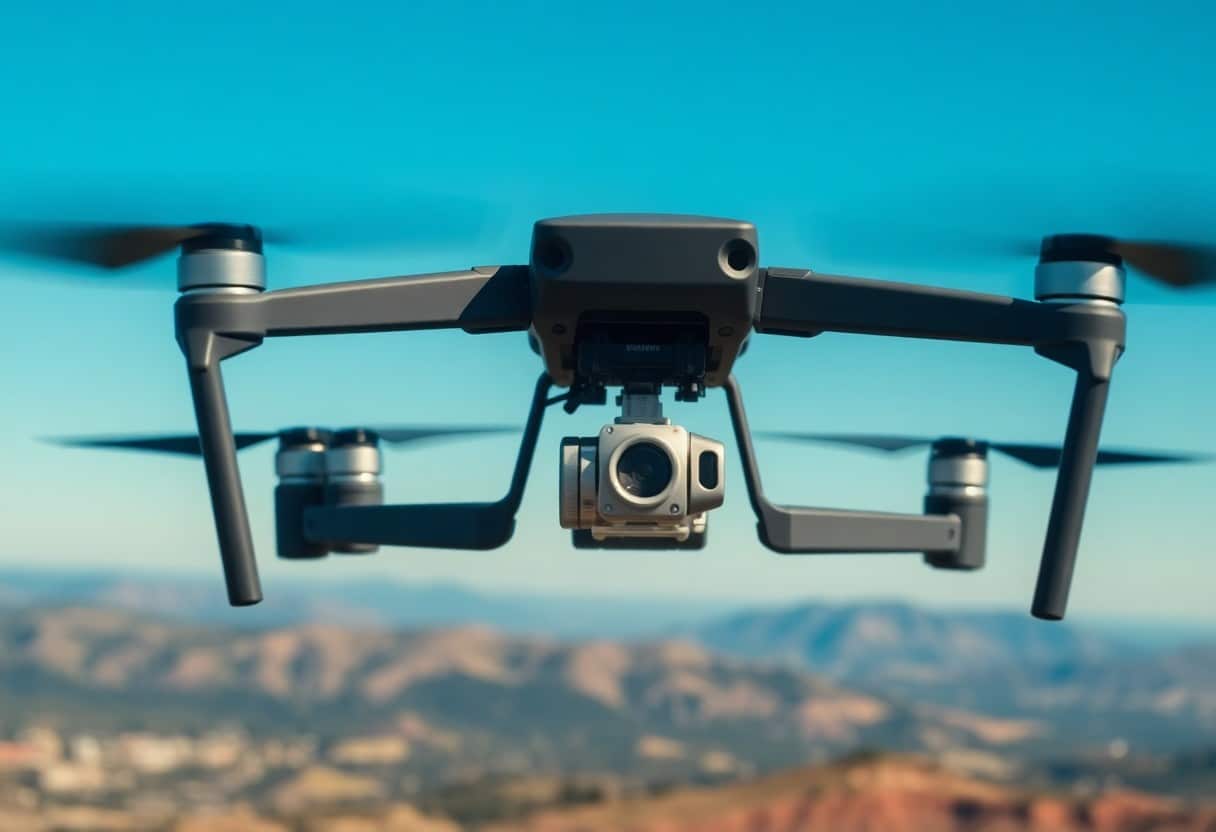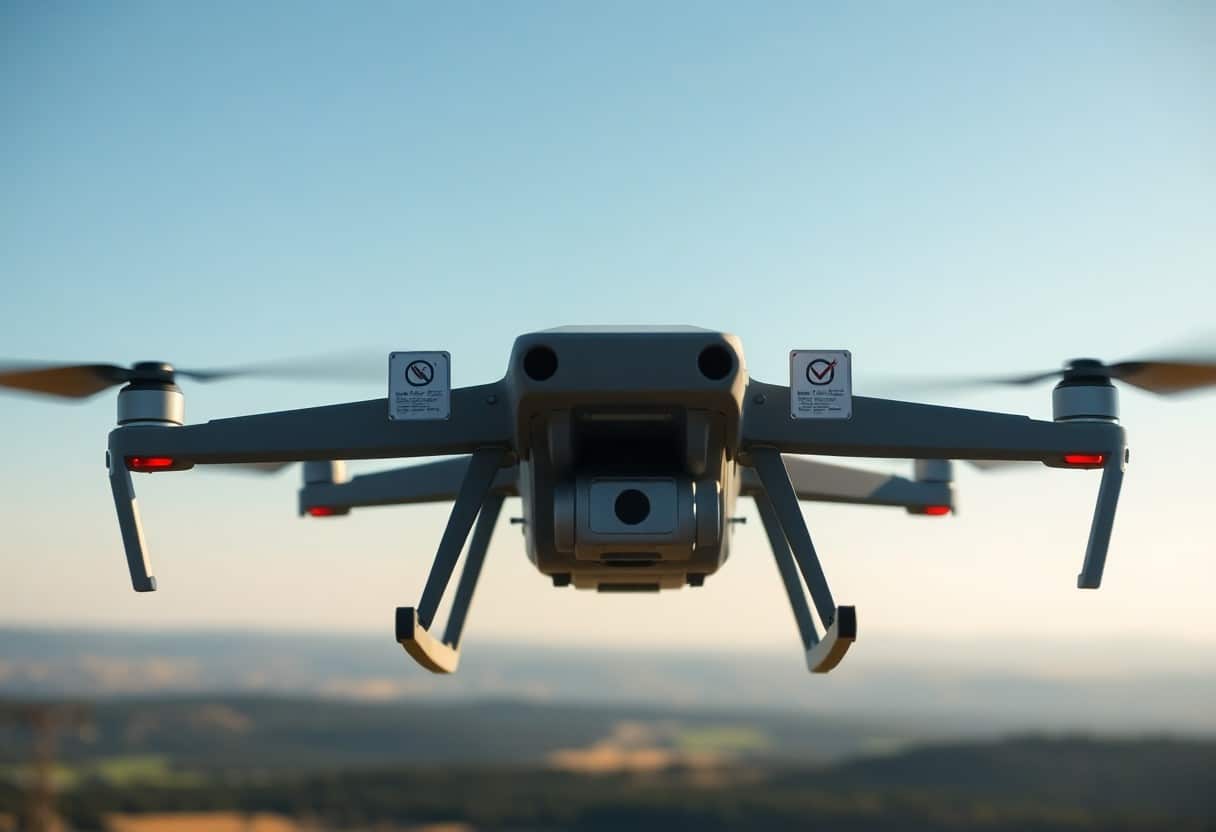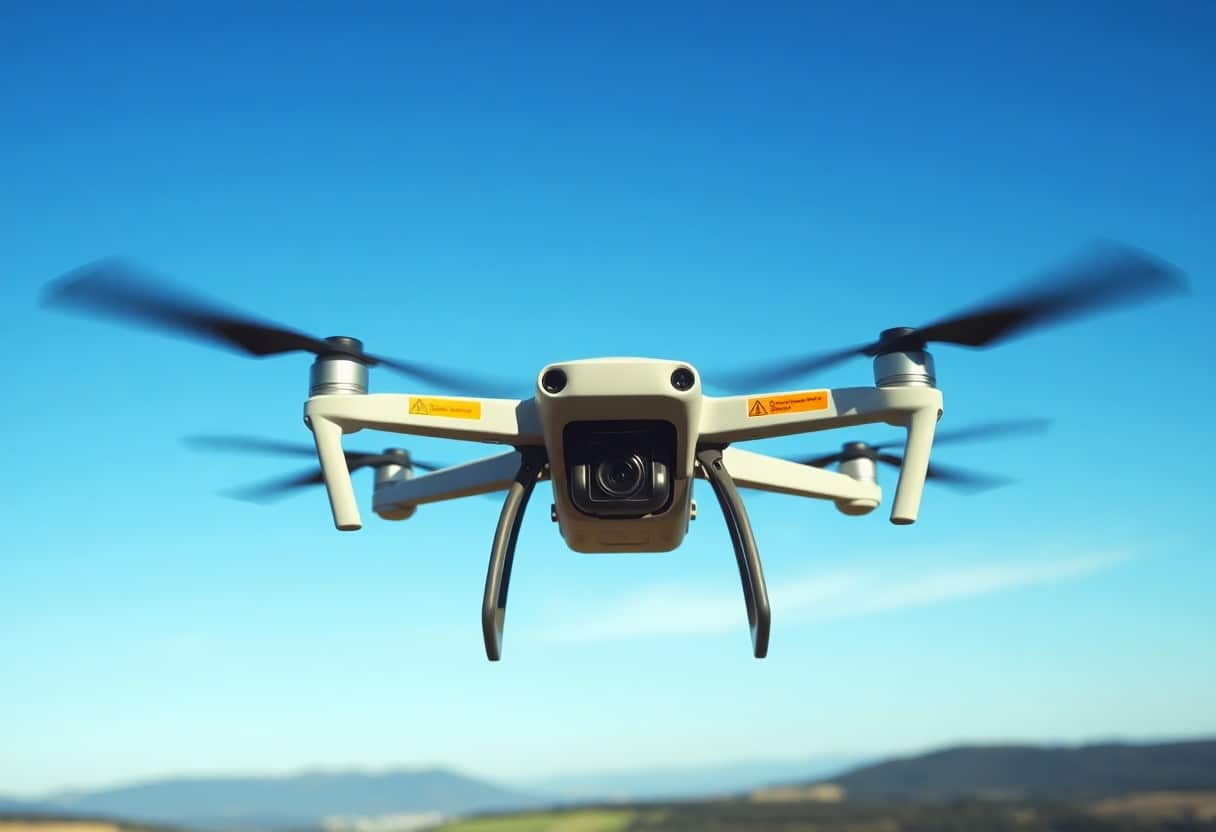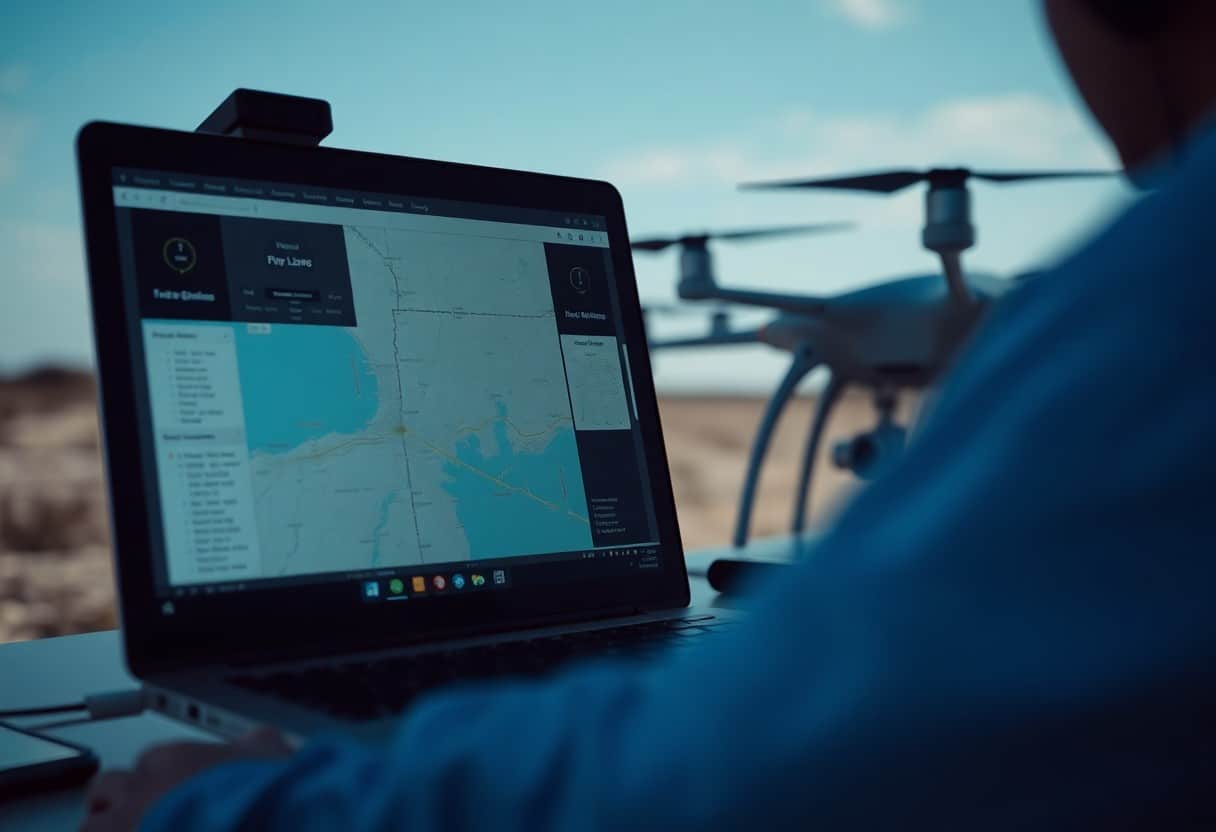7 Key Steps to Airline Flight Approval - What You Need to Know
Before you take to the air, you need to know thatSeven Key Steps to Obtaining Flight ApprovalThese steps will not only help you. These steps will not only help youAvoiding Legal TroubleIt also ensures that your flight operationsSafe and compliantThe knowledge you need will make your flying experience hassle-free, whether you are a professional or an amateur. Whether you're a professional operator or an amateur, having this essential knowledge will make your flying experience hassle-free. Next, we'll take a closer look at how to effectively obtain a flight authorization.
Important points:
- Understanding Parameters - Knowledge of relevant air navigation regulations and guidelines.
- Submit an Application - Correctly complete and submit the application form for air flight authorization.
- Compliance with safety standards - Ensure that all operations meet safety requirements to minimize risk.
- Conducting risk assessment - Evaluate all potential risks in the program and recommend strategies to address them.
- Obtaining the Necessary Permits - Ensure that all relevant permits and documentation have been obtained.
- Communicate with relevant organizations - Maintain good communication with aviation authorities to ensure a smooth process.
- Stay up to date - Regularly check for the latest changes in laws and regulations to remain compliant.
Understanding of airborne flight regulations
Before you fly, it is important that you fully understand the relevant air travel regulations. This not only ensures that your flying activities are legal, but also minimizes the risk of accidents. Regulations may vary from country to country, so it's important to understand the Federal, State and Local Regulations It is critical to the success of obtaining a flight authorization.
(FAA) 1.500 000 1.5550 yards
According toFederal Aviation Administration (FAA)It is your responsibility to ensure that all standards and procedures are followed in the operation of your drone. This includes requirements such as registering your drone, following maximum flight altitudes, flying at eye level, and ensuring that your drone equipment meets relevant safety regulations.
Local and State Specifications
In addition to federal requirements, you need to be aware of local and state regulations in your area. These Specification This may include the establishment of no-fly zones, specific flight time restrictions, or limitations on the use of certain types of drones, which may affect your flying activities.
Local and state regulations often vary from place to place, and you should pay special attention to changes in local laws. For example, some cities may have very strict requirements for drone use, especially in densely populated areas. You should seek out and familiarize yourself with local flight restrictions, as well as specific flight permit conditions, in order to avoid Fines or legal issuesThe
Prepare your air flight application
When preparing your air flight application, first make sure you understand the requirements and procedures. You will need to obtainWhat You Should Know Before Seeking Airplane ApprovalThis will help you prepare for the application process. Make sure you have all the necessary documents to support your application and follow every step to ensure a successful application.
Gathering the necessary files
In order to successfully submit an air flight application, you must collect all relevant Required documents. This may include your drone license, proof of insurance, operator's manual, and any other required documents. Make sure these documents are complete to avoid problems during the application process.
Develop a comprehensive flight plan
Developing a comprehensive flight plan is the key to successful approval. It needs to detail your flight path, expected altitude and flight time. In addition, the plan should include Potential Risk AssessmentThe following are some of the most important safety precautions you can take, as well as contingency measures to ensure that your flight does not impact your surroundings.
When creating your flight plan, remember to consider a variety of Potential obstacles and weather conditions.. Detail your takeoff and landing locations, routes, and any specific activities or occasions that are important factors in evaluating the safety of your program. In addition, consider how you will respond to emergencies to ensure that your plan is complete and meets all necessary safety standards. A well-developed plan will not only minimize hazards, but will also enhance your chances of success.

Submit your application
Before you start submitting your application, please make sure you fully understand the rules. According to7 Key Steps to Taking Stunning Aerial PhotographyIt is important that your application is well prepared, as failure to do so may result in delay or rejection. Carefully checking all information for accuracy and completeness will help speed up the review process.
Online Application Process
When submitting an online application, make sure you fill out all the required forms on the FAA's official website. You will need to provide details of your program and safety measures, which will help reviewers quickly evaluate your application. In addition, be prepared to pay the associated application fees and digitize documents as much as possible to make your application more efficient.
Common Pitfalls to Avoid
There are a few common pitfalls to be especially aware of when filling out an application. First.Avoid providing incomplete or inaccurate informationThe reason is that this will lead to delays or outright rejection of the applications. Moreover.Don't overlook the detailsThis is especially true of the flight plan and risk assessment sections. These are critical to the success of your application.
Also, you should avoid delays in submitting your application by the deadline, as this may result in incomplete documentation or missed updates to the regulations.Ensure you are fully aware of all requirementsIf you are not sure about something, ask for help. If you are unsure about something, ask for help. Finally, after submitting, remember to check the status of your application regularly to follow up on any further requests or questions.

Navigation Approval Process
Understanding how to navigate the approval process effectively is essential when undertaking an aerial flight. You will need to follow a series of steps and fulfill all the requirements step-by-step to ensure that your application is successful. Accurately preparing the necessary documents and information will help increase the success rate of your approval and allow you to fly without delays.
Time Expectation
When applying for approval, you should have a clear idea of what to expect. Typically, the process can take anywhere from a few weeks to a few months. Make sure your program has a sufficient buffer to accommodate possible changes and other requirements. Every day of this time can affect your flight schedule.
Potential delays and how to manage them
During the approval process, you may experience delays, which may be due to incomplete documentation or lengthy review times, for example. To effectively manage these potential delays, you need to review all submissions in advance and maintain good communication with the relevant departments so that any issues can be resolved quickly.
In the face ofPotential DelayIt is important to anticipate and ensure that all of your information is correct. In the past, many delays have been caused by incomplete or irregular submissions. Therefore, you should carefully review each requirement and file your application within the scheduled timeframe. Additionally, regularly following up on the status of your application and keeping in touch with reviewers can help you get a quick response when you encounter problems, thus minimizing the impact of delays on your program. Flexibility and patience will also help you meet these challenges with greater ease.

Organizational security measures
During the course of an aviation flight authorization, you must fully organize a variety of safety measures to ensure flight safety. This includes the identification of potential risks and the development of contingency plans to deal with possible emergencies. By systematizing your safety measures, you can significantly reduce the risk of accidents and protect your safety as well as the safety of others.
Risk Assessment
When conducting a risk assessment, you need to evaluate all potential risks involved in the flight mission, whether they are environmental factors or technical failures. To identify and analyze risks effectively, you can use various tools and methods and, based on the results of your assessment, develop measures to reduce them.
Contingency Agreement
draw upContingency AgreementOne of the key steps in ensuring safe flight. You should identify all possible emergency situations, including equipment failure, bad weather or other unforeseen events, and develop procedures to deal with them. That way, when an accident occurs, you can act quickly and effectively to minimize its impact.
You'll need to develop detailed action plans for different emergencies in advance and make sure all participants are familiar with them. In the event of an emergency, theRapid Responseand clear instructions can save lives and property. Regular drills and training are conducted to ensure that everyone is able to carry out emergency procedures efficiently and is ready to respond to possible challenges.
Post-approval Compliance Maintenance
After obtaining air flight authorization, you must maintain aComplianceTo ensure that your drone is operated in accordance with all legal and safety standards. Regular inspection and maintenance of your drone is key to avoiding potential problems. Also, make sure you understandWhat are some tips to improve your remote control skills for better drone control?The purpose of the program is to promote ongoing compliance.
Reporting Requirements
You need to follow a specificReporting RequirementsThis usually involves the regular submission of drone operational data and incident reports to the regulatory authorities. This not only maintains transparency, but also ensures the safety of drone operations.
Routine Maintenance and Inspection
Routine maintenance and inspections are the cornerstone of your drone's safe operation.Regular InspectionAll the components of a drone, especially the batteries, propellers, and sensors, can help you catch problems early and avoid accidents.
During routine maintenance, all items specified in the drone's operator's manual should be carefully checked, includingCleaning, Lubrication and ReplacementSupplies. You should also record the details of each maintenance visit so that you can track usage and performance changes. These records not only help to identify trends over time, but also provide the necessary evidence in the event of a legal compliance check or accident investigation.
7 Important Steps to Obtaining Air Travel Approval - What You Need to Know
It is important that you follow these 7 key steps in the process of obtaining air travel authorization. From familiarizing yourself with local aviation laws and regulations, to submitting the necessary documentation, to conducting a risk assessment, each step needs to be carefully executed. Knowing these steps will help you complete your application and ensure that your flight meets all safety and legal requirements. Having this information at your fingertips will give you the confidence and security you need for your flight program.
Frequently Asked Questions
Q: What are the Seven Critical Steps to Airline Approval?
A: The seven critical steps for air flight approval include: 1) determining the purpose of the flight, 2) checking local regulations, 3) obtaining flight authorization, 4) preparing a flight plan, 5) conducting a risk assessment, 6) training the operator, and 7) ensuring that all equipment meets safety standards.
Q: Why is determining the purpose of the flight the first step?
A: Determining the purpose of the flight will help to develop the appropriate plan, methodology and permits required, and will ensure compliance with relevant regulations and avoid non-compliance.
Q: How do I check local regulations?
A: Checking local regulations can be done by visiting the Civil Aviation Authority's website, reviewing the latest legal and regulatory documents, or consulting with a professional legal advisor for accurate information.
Q: What is the process for obtaining a flight authorization?
A: The process of obtaining a flight authorization usually involves submitting an application, providing a flight plan, undergoing a review and waiting for approval, the length of which depends on the specific requirements of each country or region.
Q: What factors should be considered in risk assessment?
A: Risk assessment should take into account factors such as weather conditions, condition of flight equipment, possible obstacles, people and objects in the flight area, and potential safety risks.
Q: What training is required for operators?
A: Operators are required to receive basic training on flight operations, training on emergency response capabilities, and training on understanding relevant laws and regulations and safety precautions for unmanned aerial vehicles (UAVs).
Q: How do I ensure that my equipment meets safety standards?
A: Ensuring that the equipment meets safety standards requires regular inspection and maintenance, following the manufacturer's instructions for use, keeping relevant certificates and marks of conformity valid, and carrying out the necessary tests and certifications.




